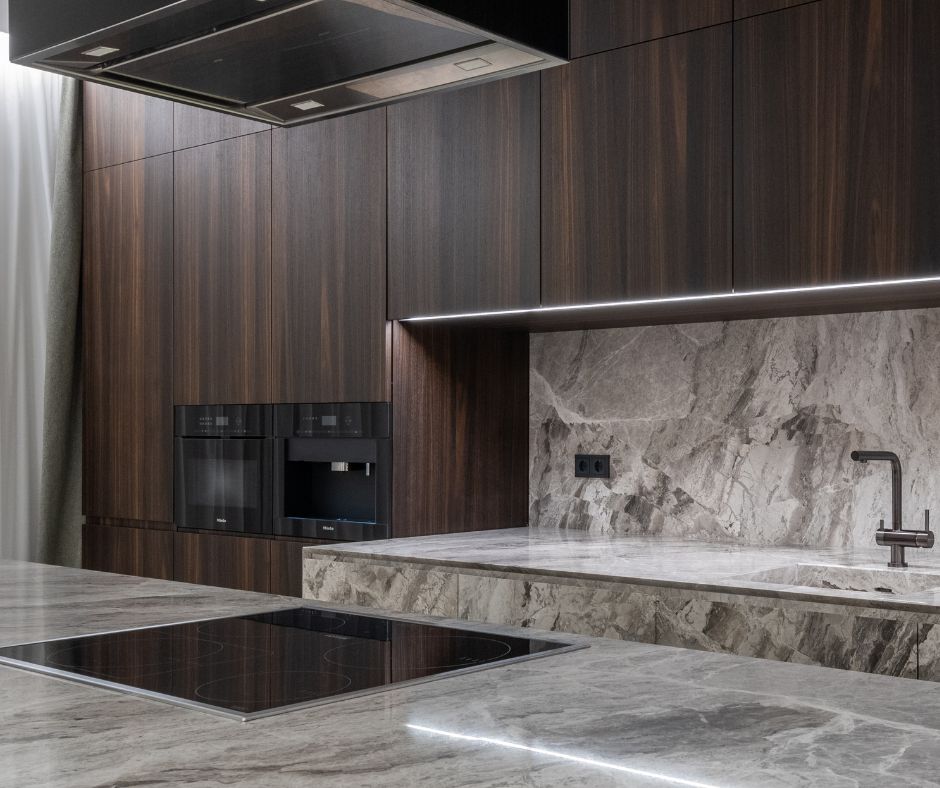Transformative kitchens give rise to exciting new culinary traditions. While induction cooking technology may appear to be a contemporary innovation, its historical roots extend back to the early 20th century. Enthralling demonstrations in the 1930s showcased its astonishing capability to boil water using magnetic energy without any visible heat source, captivating audiences at the time. However, it is only in recent decades, driven by significant advancements in technology, efficiency, and design, that induction cooktops have firmly established their presence in modern kitchens, revolutionizing the home cooking experience.
Today, a growing number of home chefs and culinary enthusiasts are embracing induction cooking for its unique blend of sleek aesthetics, exceptional precision, and unmatched energy efficiency. This innovative cooking method not only accelerates meal preparation but also transforms the culinary landscape, integrating the science of heat management with artistic flair in every dish crafted on its elegant, polished surface. The perfect induction cooktop can rival the speed of a microwave in producing delightful family meals!
Harnessing Flavor and Nutritional Benefits with Precise Cooking Techniques
Unlike traditional gas or electric ranges, induction cooktops efficiently heat cookware through electromagnetic energy. This groundbreaking technique eliminates wasted heat, prevents burnt edges, and offers exceptional control over both low and high temperatures. With such precise heat management, your ingredients can retain more of their natural moisture, flavor, and nutritional integrity. Whether you’re flash-searing proteins, gently simmering sauces, or quickly blanching vegetables, induction cooking enables you to achieve perfect results effortlessly, effectively avoiding overcooked meals and nutrient loss.
Elegant Induction Cooktops: Maximizing Kitchen Space and Minimizing Cooking Stress
In kitchens where every inch of space is precious, induction cooktops shine not only in performance but also in visual appeal. Their flat, smooth surfaces seamlessly blend into your countertop, creating a minimalist aesthetic while providing extra room for food preparation, plating, or even casual dining experiences.
Unlike conventional gas hobs, which often feature bulky grates and protruding burners, induction cooktops align flush with the countertop. While ceramic stovetops may also present a sleek appearance, they tend to remain dangerously hot long after cooking has finished, posing a risk to safety.
In contrast, induction surfaces cool down quickly once the cookware is removed. The heat is generated through the magnetic interaction between the cooktop and the cookware, rather than from the cooktop itself, which means the glass surface retains significantly less heat. This characteristic not only makes cleaning safer and easier but also creates a more secure cooking environment, especially beneficial for households with children or pets who may be curious about the kitchen counters.
The result? A cooler kitchen with cleaner lines and greater flexibility—perfect for modern cooks who value both functionality and style.

Comprehensive Guide to Choosing the Ideal Cookware for Induction Cooking
Transitioning to induction cooking may come with the bittersweet realization that you might need to part ways with some beloved old pots and pans. Since induction technology relies on magnetic energy for effective heat generation, not all cookware will be suitable for this innovative method.
For cookware to work efficiently on an induction cooktop, it must be constructed from ferrous (magnetic) metals, such as cast iron, carbon steel, or magnetic-grade stainless steel. A simple fridge magnet test can easily determine compatibility: place a magnet on the bottom of the pan, and if it sticks firmly, you’re all set to cook.
When selecting new cookware, choose pans with a heavy, flat base. This design ensures optimal contact with the cooktop, providing even heat distribution essential for achieving perfect browning, tender roasts, and crispy edges. Additionally, high-quality induction cookware is engineered to resist warping over time, ensuring consistent cooking performance for every meal.
Although it may be difficult to let go of old favorites, consider it a valuable upgrade. In exchange, you gain enhanced control, faster cooking times, and meals that showcase richer flavors and textures.
Induction Cookware Essential Checklist: Key Items for Culinary Success
 Conduct a fridge magnet test—strong adhesion indicates induction compatibility
Conduct a fridge magnet test—strong adhesion indicates induction compatibility Opt for flat-bottom pans to enhance contact and heat distribution
Opt for flat-bottom pans to enhance contact and heat distribution Choose cast iron, carbon steel, or magnetic stainless steel cookware
Choose cast iron, carbon steel, or magnetic stainless steel cookware Avoid cookware made solely of copper, aluminum, or glass unless explicitly labeled for induction
Avoid cookware made solely of copper, aluminum, or glass unless explicitly labeled for induction Look for the induction symbol (resembling a horizontal coil or series of loops) stamped on the base or packaging
Look for the induction symbol (resembling a horizontal coil or series of loops) stamped on the base or packaging
Pro Tip: The induction symbol often resembles a zigzag or spring coil graphic. Spotting it guarantees cookware compatibility.
Essential Installation Considerations for Your Induction Cooktop
Before embarking on your culinary journey with a new induction cooktop, several critical installation requirements must be prioritized:
-
Professional Installation Is Crucial: Induction units often require dedicated electrical circuits and specific clearances. Ensure you hire professionals who understand these requirements for a safe and effective setup.
-
Hire a Licensed Electrician: Wiring a high-powered induction cooktop is not a DIY project.
Learn why hiring a qualified electrician is essential for safe and reliable operation. -
Verify Your Electrical Setup: Some induction models consume significant power. Before purchasing, ensure your wiring meets the cooktop’s requirements for optimal performance.
Proper installation guarantees not just optimal performance, but also safety and longevity for your induction cooking experience.
Key Insights About Induction Cooking Technology
Induction cooking provides more than mere speed or safety—it’s inherently intelligent in its approach. By utilizing the right cookware and ensuring a professionally installed system, you can consistently create better-tasting meals, richer textures, and healthier options, meal after meal. In today’s modern kitchens, precision cooking is not just a preference; it has evolved into the new standard.
Frequently Asked Questions About Induction Cooktops
1. What Makes Induction Cooktops Superior to Gas or Electric Options?
Induction cooktops offer instant heat control, improved energy efficiency, and enhanced safety features. Since they heat the cookware directly, meals cook more rapidly with less energy waste, while the surfaces stay cooler, reducing the risk of burns and accidents.
2. Can I Use My Existing Pots and Pans on an Induction Cooktop?
Only if they are magnetic. Cookware made from cast iron or magnetic stainless steel is ideal for induction cooking. You can easily verify compatibility by placing a magnet on the base—if it adheres firmly, it’s suitable for use on induction.
3. Does Induction Cooking Affect the Flavor of Food?
Yes, and in a positive manner. Induction cooking’s ability to provide precise temperature control enables you to sear, sauté, or simmer without overheating. This method preserves the natural flavors, textures, and nutrients far more effectively than traditional gas or electric heat sources.
4. Is Special Wiring Necessary for an Induction Cooktop?
Most induction cooktops require a dedicated electrical circuit along with specific voltage and amperage configurations. It’s essential to have a professional electrician assess and install your wiring to ensure it complies with safety regulations and guarantees optimal performance.
The post The Secret Ingredient in Modern Kitchens: Induction Cooktops Are Changing the Game appeared first on https://cookinggods.com
The Article Induction Cooktops: The Game-Changer in Modern Kitchens Was Found On https://limitsofstrategy.com


It’s fascinating to think about how induction cooking technology weaves together the threads of history and innovation. The early demonstrations of the 1930s really do highlight the long-standing curiosity surrounding magnetic energy—a concept that seems almost futuristic for its time. I’ve noticed how induction cooktops not only enhance kitchen aesthetics but also encourage healthier cooking practices. For example, the quick temperature adjustments allow for better control over cooking methods, which is crucial for preserving nutrients in food.
You’ve touched on some intriguing points about the intersection of history and modern cooking technology. It’s interesting how the concept of induction cooking, which once felt so radical, has become a staple in many kitchens today. The ability to harness magnetic energy for cooking not only showcases human ingenuity but also reflects our ongoing journey toward smarter and more efficient living.